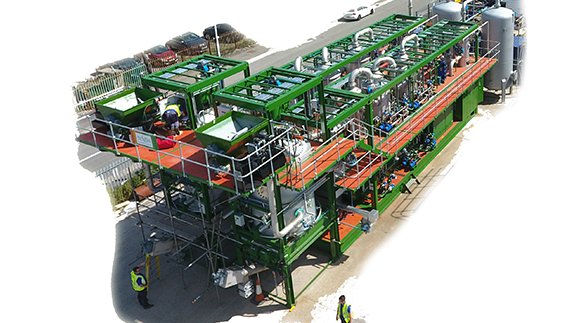In the past, technologies capable of converting waste materials into electricity have either been huge, cathedral-scale incineration plants or unreliable, dirty and inefficient small-scale combustion systems.
These just don’t work for industrial energy users, who need reliability, efficiency and impeccable green credentials – as well as a reasonable price tag.
Finally, this technology has come of age – Refgas has spent 10 years perfecting a truly modular, plug-and-play system which takes various, waste-derived feedstock types and converts them into an ultra-clean synthesis gas.
This syngas, which is accredited as being cleaner than natural gas, is then used as the fuel to drive traditional gas engine generating sets, making it one of the cleanest thermal systems on the planet.
The incredibly compact design, with each module being made up of four container frame sections, caters for companies which need to generate from 1MW to 20MW of electricity per hour and also need lots of process heat, steam or chilled water, which is produced in a neat Combined Heat and Power (CHP) package.
At Refgas’ North Wales headquarters, these green gas modules are built and tested, ready for quick delivery and installation.
Everything is self-contained and weather-proofed, with minimal site works required. The only building needed is a shed to house the feedstock, whether this be low-grade recycled wood from construction/demolition or fuel manufactured from municipal solid waste.
Don’t worry if you can’t provide the feedstock – Refgas can fix up a contract to source this locally on the best commercial terms.
In this way, energy hungry industrial and commercial organisations can protect their future energy supplies and be in control of their costs, with any excess power available for export to the grid.
All of this is fuelled by the millions of tonnes of waste produced year in, year out.
This is a promoted article.





